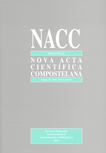Vol 19 (2010), Artigos científicos
Recibido: 27-04-2012
Aceptado: 27-04-2012
Publicado: 27-04-2012
Owls (Strigiformes) are particularly difficult to study and the existing information is still scarce. In PNPGarea there are records of the seven species present in Portugal; the Long-eared Owl and the Short-eared Owl arehere occasional species. This work aims to determine the distribution, density and abundance of Strigiformes inPNPG (Northwest of Portugal). Between December 2007 and June 2008, 106 passive hearing point counts of15 minutes each were done in the centre of each of 106 squares (2x2 km). Distribution maps for each specieswere obtained. Therefore, we recorded a total of 98 contacts for Tawny Owl and 67 contacts for Scops Owl.We also obtained 7 contacts of Little Owl, 2 contacts of Barn Owl and one of Eagle Owl. The habitat selectionby Scops Owl and Tawny Owl was also studied. Scops Owls seems to avoid low shrub and preferred forestedareas. Tawny Owls also avoid low shrub areas, preferring forested areas, and were found in urban areas. Thepopulations of these two species in PNPG show a considerable expansion, while the other ones reveal a markeddecline regarding the previous situation. The implementation of monitoring and conservation measures is suggestedto stop the decline of these three species.
Strigiformes, distribution, Owls, habitat preferences, census, Portugal


